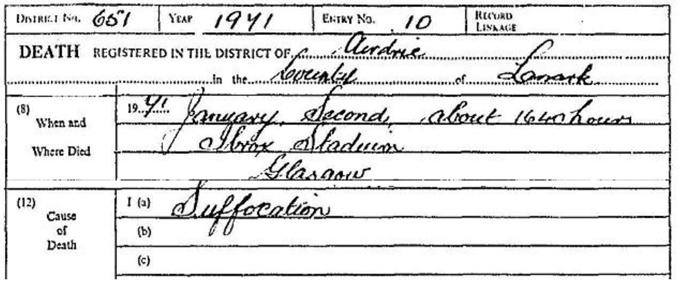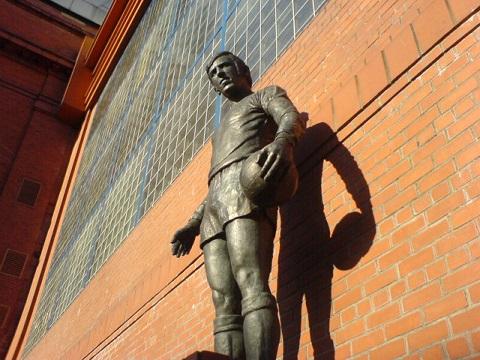Scotland's People holds the official record of some of the most important events of our lives and, every year, we add the records of people who died in Scotland fifty years ago to our website.
Like the other records we hold, these death entries are an important element of the public record and they contain information that will help future generations to research events that shaped our lives. Our archives also hold the public record of court cases, including public inquiries.
61,614 deaths were registered in Scotland in 1971; 31,585 men and 30,029 women, totalling 2,026 fewer deaths than the preceding year.
The entries of the people who died in Scotland that year are now available to search and save on the Scotland's People website. They are part of over 138,500 images released in January 2022 comprising 62,746 death entries in 1971, 145,602 birth entries in 1921 and 54,630 marriage entries in 1946.
Every death registered is painful for the person’s family and friends but one terrible event which occurred early into the New Year of 1971 was especially tragic.
The 2nd January 1971 was a bitterly cold day, thick with freezing fog. At Ibrox Stadium in Glasgow, more than 80,000 football fans arrived to watch the Old Firm game between Rangers and Celtic. Sadly, 66 of those supporters didn’t return home at the end of the match.
The match itself had been a fairly non-eventful affair with no goals scored as the game headed into its final minutes. When Celtic winger Jimmy Johnstone scored what appeared to be the winning goal, Rangers fans, assuming that their team had lost, began to leave the stadium. Rangers’ player Colin Stein scored seconds later with an injury-time equaliser.
As fans began to try to exit the stadium at the blow of the final whistle, one or two people accidentally slipped. Stairway 13 was packed with supporters, as it often was at other games, and as waves of people gained momentum they could not see that others had fallen. A terrible crush ensued.
Most of the deaths that occurred are recorded as being caused by compressive asphyxia. Everyone who died was under 50 years old, and many of the injured fans received life-saving treatment whilst laying on the stairways.
To this day, it is the deadliest football stadium disaster in Scotland and the ninth worst in the world.

Detail from the death entry of one football supporter who died at the Ibrox disaster in Glasgow, 2nd January 1971.
Crown copyright, National Records of Scotland (NRS), Statutory Register of Deaths, 1971, 651/10
Scotland was united in shock. Supporters from all clubs came together to mourn the devastating event and many world leaders, including the American President Richard Nixon and The Pope, sent messages of condolences.
There was an outpouring of financial support in the following days and weeks. Rangers pledged £50,000 to the appeal, with Celtic and other football teams from across the world also contributing to the cause. Charity events were held to raise money for families of victims. By 20th March 1971, the Liverpool Echo reported that more than £250,000 of the £315,000 received for the fund had been paid out in various ways to assist families of the victims.
Rangers manager Willie Waddell made the decision that Rangers players should be in attendance at the funerals of all of the victims of the disaster, and that players should also visit the injured in hospital. On one day alone, 20 funerals took place in Glasgow.
A Fatal Accident Inquiry was held into the tragedy with 102 witnesses (excluding family members) called to give evidence. It began on 15th February at Pollokshaws Burgh Hall before Sheriff Allan Walker and lasted seven days.
Pathologist Professor Giles Forbes confirmed that 60 of the victims had died from asphyxiation and the remaining six from suffocation. The jury’s written statement confirmed that the incident had been caused by one or two people falling down the stairs, leading to others behind them also falling, causing a crush of bodies.
The Prime Minister, Edward Heath, also asked The Secretary of State for Scotland, Gordon Campbell, Baron Campbell of Croy, for a full inquiry into the catastrophe.
Lord Wheatley led this investigation with a committee to examine existing arrangements for crowd safety. Evidence was collected and reviewed for over 12 months; part of this was an inquiry led by Walter Winterbottom (the first and longest serving manager of the England football team) which visited over 60 football grounds in Britain.
Its report criticised the lack of proper facilities for the police, first-aid and ambulance services and the co-ordination of all personnel involved in crowd control at certain grounds. The report determined that the safety precautions at football grounds, which had been used for over 50 years, were no longer adequate and should be replaced by a statutory licensing panel that were, at the time, already being used in many other places where public entertainment was being held.
The report also called for a central code of standards to be created as a guideline to be used by licensing boards and clubs across the country to create a minimum standard of safety at all grounds. This was both to protect the public but also to guide the clubs when considering any improvements to their grounds.
NRS holds the Wheatley Report on Crowd Safety at Sports Grounds: Inquiry into the Ibrox Disaster (NRS, ED27/557). These records are not available to view on Scotland's People but a request can be submitted to consult them in the Historical Search Room at NRS.
Today, a plaque outside the Rangers Football Club ground remembers those who died at the game in 1971 and commemorative events have taken place across the subsequent decades so that those who lost their lives will never be forgotten. The club also marked the fiftieth anniversary of the disaster last year on the Rangers FC website.

The statue of John Greig, former Rangers player, outside the Ibrox Stadium. A memorial to those who died in the disaster.
Credit: Wikimedia Commons
For more information about Statutory records please see our guides.
If you have been affected by the issues raised in this article, you can find assistance with organisations such as Cruse Bereavement Support, which offer guidance and support on dealing with bereavement.